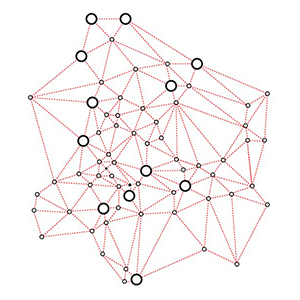The living tissue of human relationships in the early infant school space
DOI:
https://doi.org/10.35305/23626097v7i13.283Keywords:
pedagogy, architecture, infancy, school, communityAbstract
The understanding of an infant school as a community -a living tissue- allows us to approach its architecture from a more human perspective that addresses spatial organization and its impact on the organization of teams. This scenario is studied through the ecological theory. Both educational spaces and the human relationships they house give rise to a shaping process that reflects contradictions. Different coherent alternatives are discussed. The interaction between the physical support and the events that take place within this space is revealed as one of the key features to tackle the problem of the teacher's deep isolation in the classroom. The research has been carried out in the municipal nursery schools of Madrid - in the context of the last legislature of the consistory. Two lines of work are simultaneously undertaken. First, from the pedagogical field, interviews of a biographical-narrative type with teaching teams of the existing schools are introduced. Second, from the architectural field, a reflection on the design process of the new schools -among which one will be shown as a case study- is dealt with.
This scenario needs the search of a shared leadership horizon grounded on a comprehensive and democratic conception of the school, its pedagogy and its architecture.
Downloads
Metrics
References
Acaso, M. (2012). Pedagogías invisibles: El espacio del aula como discurso. Madrid, España: Los libros de La catarata.
Alcrudo, P., Alonso, A., Escobar, M., Hoyuelos, A., Medina, Á., y Vallejo, A. (2015). La educación infantil en España: planteamiento, situación y perspectivas de la educación de 0 a 6 años. Madrid, España: Fantasía Editorial.
Alexander, C., Ishikawa, S., y Silverstein, M. (1977). El lenguaje de patrones. New York, USA: Oxford University Press.
Álvarez, M. (2010). Liderazgo compartido. Buenas prácticas de direccion escolar . Madrid, España: Wolters Kluwer España.
Atrio Cerezo, S. (2018). Los Espacios en el Pacto Educativo: Arte, Extensión y Contexto Social de un Instrumento Didáctic Participativo. Cuadernos de Pedagogía, (488), 102-111.
Bolívar Botia, A. (2011). Una dirección pedagógica con liderazgo en los centros escolares. Monográficos escuela, 4-6.
Bronfenbrenner, U. (1987). La ecología del desarrollo humano: experimentos en entornos naturales y diseñados. Barcelona, España: Paidós.
Carbonell, J. (2017). Pedagogías del siglo XXI. Alternativas para la innovacion eductiva. Barcelona, España: Ediciones Octaedro.
Crespo, J. M. y Lorenzo, M. D. (2016). Los espacios de la escuela primaria inclusiva: conexiones y desarmonías entre la normativa de construcciones escolares y las finalidades del sistema educativo. Bordón, I(68), 131-144. doi:10.13042/Bordon.2016.68108
Deal, T. y Kennedy, A. (1982). Culturas corporativas: ritos y rituales de la vida organizacional. Reading, Inglaterra: Addison Wesley Publishing Company.
Dusell, I. y Caruso, M. (1999). La invención del aula. Una genealogía de las formas de enseñar. Buenos Aires, Argentina: Santillana.
Escolano, A. (1993-94). La arquitectura como programa. Espacio-Escuela y Currículum. Historia de la educación, XII-XIII, 97-120.
Escudero Muñoz, J. (1992). Desenvolupament de l'escola, formació del professorat i millora de l'educació. Elements d'acció educativa, 33.
Eslava, C. (2019). ¿Cómo serán las escuelas en el 2050? Aula de infantil(100), 31-34.
Estruch, J. (2004). La selección de directores escolares en Europa. Organización y Gestión Educativa, 21-24.
Gariboldi, A. (2011). El espacio y su organización. En A. Bondioli, & G. Nigito, Tiempos, espacios y grupos. El análisis y la evaluacion de la organización en la escuela infantil: DAVOPSI (págs. 99-118). Barcelona, España: GRAÓ.
Novales, P. (9 de mayo de 2014). Las corralas, todo un estilo de vida. MAS.
Papanek, V. (1971). Diseñar para el mundo real: ecología humana y cambio social. Madrid, España: Hermann Blum.
Parellada, C. (2012). Mostrando los vínculos, urdiendo las redes, mirando al futuro. Aula de Innovacion educativa (monografía de pedagogía sistémica), 10-17.
Peñalver, O. (2009). Emociones colectivas: La inteligencia emocional de los equipos. Barcelona, España: Alienta.
Rodríguez-Gallego, M. R., López Martínez, A. y Ordóñez Sierra, R. (2020). La dirección escolar: Liderazgo pedagógico y mejora escolar. Revista De Investigacion Educativa, 38(1), 275-292.
Romañá Blay, M. T. (2004). Arquitectura y educación: perspectivas y dimensiones. Revista española de pedagogía, 199-220.
Viñao Frago, A. (1993-94a). Del espacio escolar y la escuela como lugar: propuestas y cuestiones. Historia de la educación, XII-XIII, 17-74.
Viñao Frago, A. (1993-94b). El espacio escolar. Historia de la educación, XII-XIII, 97-120.
Zabalza Beraza, M. Á. (2014). Tiempos y espacios en la educación infantil., 3(2), 13-15.

Published
How to Cite
Issue
Section
License
Open access policy
A&P Continuidad is a non-profit and open access publication. According to Mexico Declaration on Cultural Policies, the journal distribution is submitted to Creative Commons Attribution-Noncommercial-ShareAlike 4.0 International Public License (CC BY-NC-SA). “Neither the commercial use of the original work nor that of the possible derivative works are allowed. The distribution of derivative works should be submitted to the license regulating the original work. This license is not free.”
A&P Continuidad authorizes the partial or full reproduction of texts and graphs provided that the source is cited. Authors are exclusively responsible for the criteria expressed in the articles which do not necessarily reflect the opinion of the Editorial Committee or that of the Direction Board. The copyright of the published articles pertains to their authors or publishers.
Transfer of rights
The acceptance of an article to be published implies the author’s transfer of rights to the journal. Authors continue to have the right to use the material in future books or publications, approve or veto the republication of their works as well as the rights related to patents or other rights. Transfer of rights form may be downloaded here.























 This OJS site and its metadata are under a
This OJS site and its metadata are under a 

